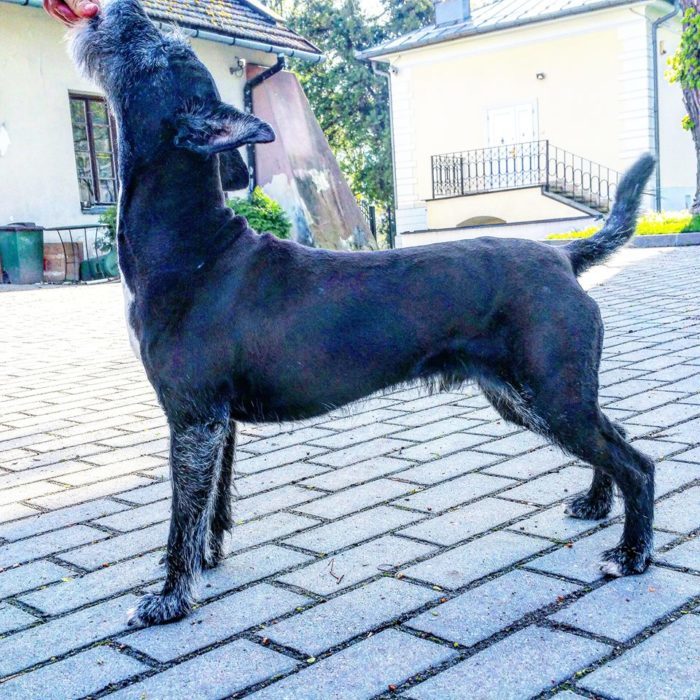
Nowadays canine conditioning is a hot topic in dog’s world. Many people have heard about dogs working on strengthening muscles and staying fit! A lot of them want to try doing the same with their dogs. On the internet we can see so many different exercises, from basic to challenging and appropriate only for advanced dogs. Very often I get a question „where should I start?”, „what should I do first with my dog?”
First go to the veterinarian and make sure your dog is ready for all the activities you are planning for him! If you have access to veterinary physiotherapist, it is a great choice to make an appointment. We want to make sure your dog is able to do what you have planned for him. Okay, so lets say your dog is perfectly healthy, you have a green light from your vet to start exercising. What should you do?
Below you will find 6 basic exercises. They are appropriate for almost all healthy dogs (check with the vet!). What is great about them, is that while your dog masters all six – you can simply increase the challenge and continue with the same exercise.
Things you need to remember while doing them:
– go slowly, it’s not a race, we want to make sure your dog is not compromising himself to do the exercise
– quality over quantity, thank you Debbie Torraca from Wizard of Paws, for always reminding abut importance of quality
– look for the signs of fatigue and if you see any (elbows pointing out or in, crouching top line etc) just stop!

1. Balance stand
– start with working up to 30 second stand on the flat surface, without weight shifts, dancing feet, sits in the middle. It is not as easy as it seems! It is your baseline for almost all other exercises so take time and don’t rush!
– when flat surface is no longer a challenge try adding some instability to the surface. Start with cushions, dog’s bed or pawds.

2. Sit to stand and stand to sit
It is very beneficial to do both version of sit and stand. Tuck and rock back sit engage different muscles, require different skills from your dog. Same with stands. Pay attention to either front feet or rears being planted and not moving during position change.
a) hindlimbs anchored
Rock-back sit, and forward stand
b) forelimbs anchored
Tuck sit and kick back stand
3. Backing
Walking backwards, not jumping like a rabbit, this exercise is great because it shows how the dog moves, you may actually locate a sweet spot of your dog while watching him backing.
Reinforce low, so that dog keeps his top line in a neutral position.
4. Heads up!
Looking up in stand. This one does amazing job for a core work. I learner it from Debbie Torraca. You will need a balance stand as a base position. When you dog is in a stand position, take a treat and lure your dog’s head slightly up, in encourages core muscles to contract, and automatically places more weight on hindlimbs. Do it few times in a row. Dog on the picture is advanced dog, it was not his first training nor the first repetition during the session.

5. Weight shifts
Again balance stand is a must have. Gently apply pressure on one side of your dog. Open palms on shoulder or hip, or both, you can also try chest, pushing gently to the opposite site. Pressure should be adjusted so the dog doesn’t move (isometrics), we don’t want to push the dog so that he falls. We don’t want the movement of the body, just muscles working hard!
6. Paw lift!
In stand! Yep, again balanced stand is here. Paw lifts, best if you can teach all paws, so front and rear. One paw up, the rest remains in the same place. Increase the challenge level by adding instability of the surface.

Each exercise should be done slowly and precisely. Don’t rush! Make sure your dog enjoys the process!
